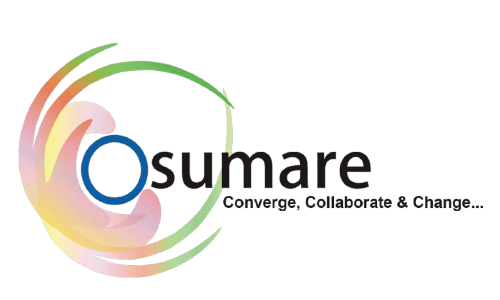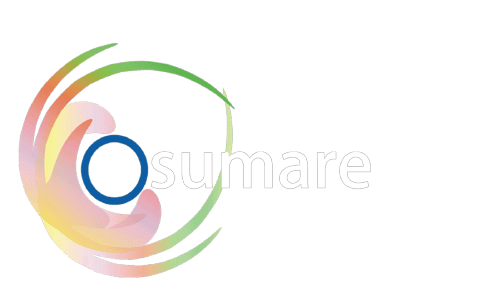In today’s fast-paced business world, automation is the key to staying ahead of the competition. Automating your sales process can help you generate leads faster, nurture prospects effectively, and close deals efficiently. Whether you’re a small business owner or managing a large sales team, automation can streamline your workflow and increase revenue.
In this article, we’ll explore seven powerful ways to automate your sales process, from lead generation to closing the deal.
Also Read: Core Web Vitals Optimization: A Deep Dive into Speed, UX, and Rankings
1. Use AI-Powered Lead Generation Tools
The first step in any sales process is finding potential customers. Traditional lead generation methods can be time-consuming, but AI-powered tools can automate this process.
How AI Helps in Lead Generation:
Chatbots and Virtual Assistants: AI chatbots can engage website visitors, answer queries, and collect contact information.
Predictive Analytics: AI tools analyze data and identify prospects who are more likely to convert.
Lead Scoring: Automated lead scoring assigns a value to each lead based on their behavior, helping sales teams focus on high-quality leads.
Best Tools for Automated Lead Generation:
HubSpot – Offers AI-powered chatbots and lead tracking.
LinkedIn Sales Navigator – Finds and connects with potential leads automatically.
Clearbit – Provides real-time data enrichment to improve lead quality.
By implementing AI-driven lead generation, your sales team can focus on engaging with warm leads rather than wasting time on cold outreach.
2. Automate Email Outreach and Follow-Ups
Email marketing remains one of the most effective sales strategies. However, manually sending emails and following up with every lead is impractical. Automated email sequences ensure timely communication and improve conversion rates.
How to Automate Email Outreach:
Personalized Drip Campaigns: Tools like Mailchimp, ActiveCampaign, and HubSpot allow you to set up automated email sequences based on user behavior.
Follow-Up Reminders: CRM systems can automatically send follow-up emails if a lead doesn’t respond.
A/B Testing: AI-driven tools analyze different email templates and optimize for better engagement.
Benefits of Email Automation:
✔ Saves time and increases efficiency
✔ Ensures no lead is forgotten
✔ Provides data-driven insights on open rates and responses
By automating email outreach, your sales team can nurture leads without spending hours on manual follow-ups.
3. Use CRM Software to Track and Manage Leads
A Customer Relationship Management (CRM) system is essential for automating your sales process. A good CRM tool not only organizes your leads but also automates communication, reminders, and reporting.
Features of an Automated CRM:
✅ Lead Tracking: Monitor where each lead is in the sales funnel.
✅ Automated Task Reminders: Never miss a follow-up call or email.
✅ Pipeline Automation: Move leads through different sales stages automatically.
Best CRM Tools for Sales Automation:
Salesforce – Advanced AI-driven automation and reporting.
Pipedrive – User-friendly sales pipeline automation.
Zoho CRM – Budget-friendly with automation features.
Using an automated CRM ensures that your sales process runs smoothly and no opportunities are lost.
4. Leverage Chatbots for Instant Engagement
Chatbots have transformed customer engagement and sales processes. Instead of waiting for a sales rep, a chatbot can interact with visitors in real-time, answering questions, and guiding them through the sales funnel.
How Chatbots Improve Sales Automation:
24/7 Availability: Engage leads even outside business hours.
Instant Responses: Reduce bounce rates by providing instant answers.
Lead Qualification: Chatbots collect customer information and assess their buying intent.
Best Chatbot Tools for Sales Automation:
Drift – AI-powered chatbot for real-time conversations.
Intercom – Automates lead qualification and customer support.
Chatfuel – Ideal for Facebook Messenger sales automation.
Chatbots help businesses engage with leads faster and move them through the sales funnel effortlessly.
5. Automate Proposal and Contract Management
Manually preparing proposals and contracts can be tedious. Automating this process not only saves time but also reduces errors and speeds up deal closures.
How to Automate Proposal Creation:
Pre-Designed Templates: Use tools like PandaDoc to generate sales proposals automatically.
E-Signature Integration: Platforms like DocuSign enable customers to sign contracts digitally.
Automated Follow-Ups: Set reminders for prospects to review and sign contracts.
Top Tools for Proposal and Contract Automation:
PandaDoc – Automates document creation and tracking.
DocuSign – E-signature and contract management tool.
Proposify – Streamlines proposal creation and approvals.
By automating contracts and proposals, businesses can close deals faster and reduce paperwork hassles.
6. Automate Sales Calls and Scheduling
A major challenge in sales is scheduling calls and meetings. Instead of emailing back and forth, you can use automated scheduling tools to book appointments instantly.
How to Automate Sales Calls:
Self-Booking Calendars: Tools like Calendly allow prospects to schedule calls at their convenience.
AI-Powered Sales Calls: AI assistants can make outbound calls and qualify leads.
Call Recording & Analysis: Tools like Gong analyze sales calls for insights.
Best Tools for Automating Sales Scheduling:
Calendly – Simplifies appointment scheduling.
Gong.io – AI-driven call analysis and coaching.
Outreach.io – Automates follow-ups and call scheduling.
With automated scheduling, sales reps can focus on closing deals rather than managing calendars.
7. Automate Payment and Invoicing
The final step in the sales process is collecting payments. Instead of manually creating invoices and tracking payments, automation tools can handle this seamlessly.
How to Automate Invoicing and Payments:
Recurring Billing: Automate subscription-based payments.
Instant Invoice Generation: Create and send invoices automatically.
Automated Payment Reminders: Ensure timely payments with auto-reminders.
Best Tools for Payment Automation:
QuickBooks – Automates invoicing and payment tracking.
Stripe – Handles online payments and subscriptions.
PayPal Business – Simplifies digital payments.
Automating payments ensures faster transactions, fewer errors, and improved cash flow.
Final Thoughts
Automating your sales process isn’t just about saving time—it’s about increasing efficiency, improving customer experience, and closing deals faster. From lead generation to payment collection, sales automation can help businesses scale effortlessly.
By implementing these seven automation strategies, your sales team can focus on what they do best—building relationships and driving revenue.
FAQs
1. How does sales automation benefit small businesses?
Sales automation helps small businesses save time, reduce manual work, and improve efficiency, allowing them to compete with larger companies.
2. Which is the best CRM for automating sales?
Salesforce, HubSpot, and Zoho CRM are some of the best options for sales automation.
3. Can automation replace sales reps?
No, but it can enhance their efficiency by handling repetitive tasks, allowing them to focus on relationship-building and closing deals.
4. Is email automation effective for sales?
Yes, automated email sequences ensure timely follow-ups and personalized engagement, improving conversion rates.
5. How do chatbots improve sales conversion?
Chatbots engage visitors in real-time, answer queries instantly, and qualify leads, making it easier to move prospects through the sales funnel.

